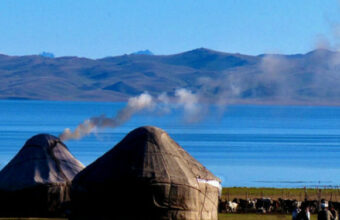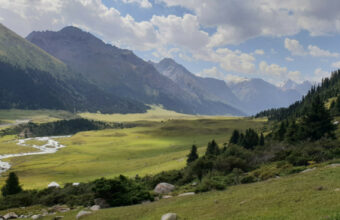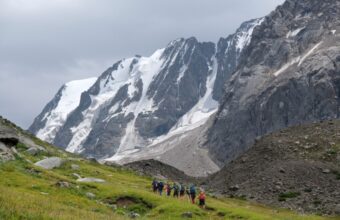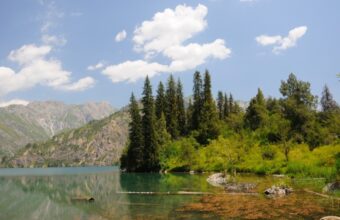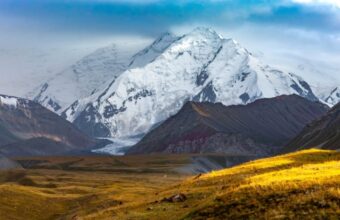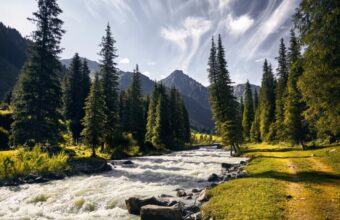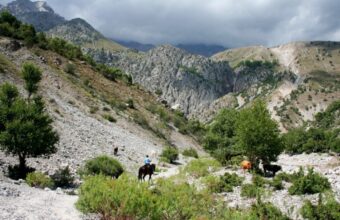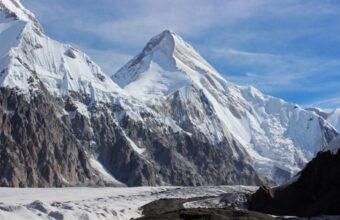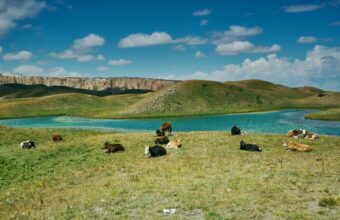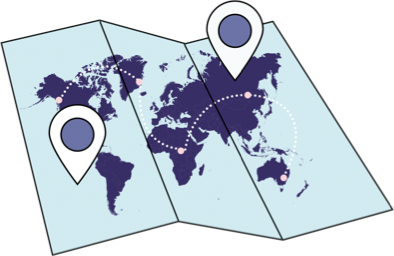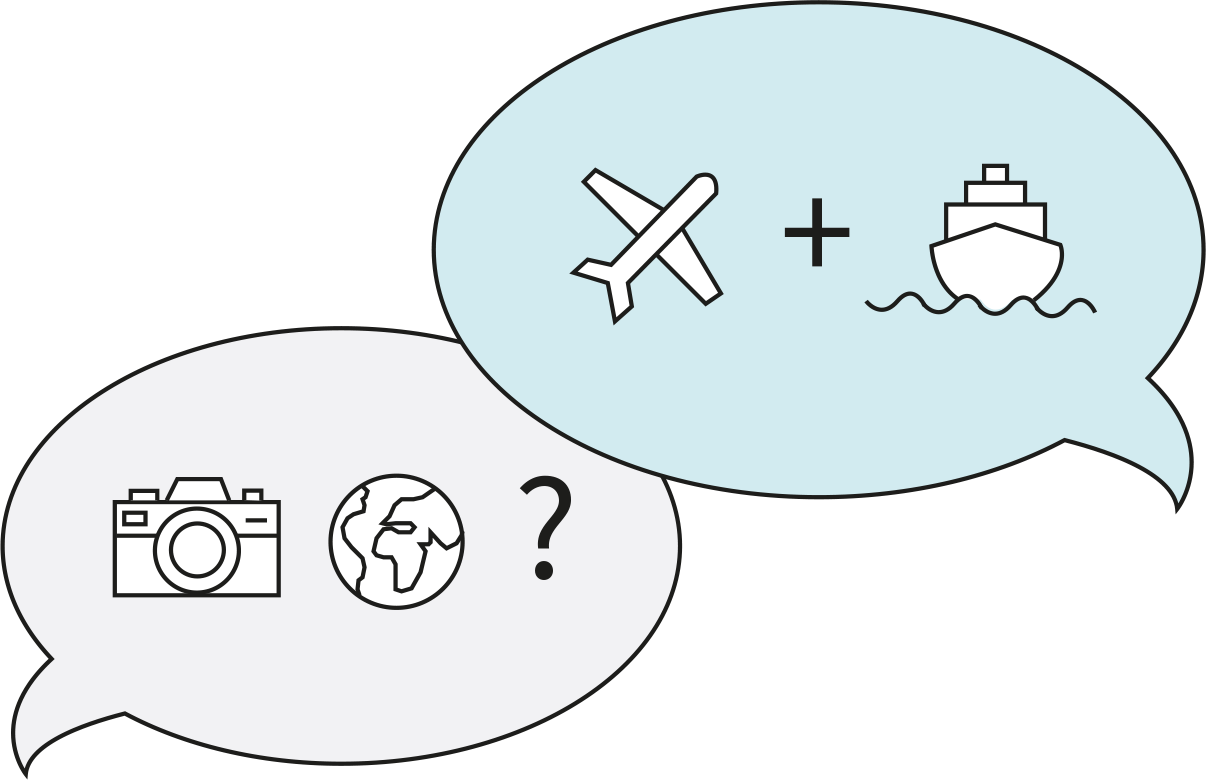Trekking in Kyrgyzstan
An expert guide to trekking in Kyrgyzstan
I’ve been based in Kyrgyzstan on and off since 2012, hiked in virtually every oblast of the country, and travelled several times to the remotest corners of the state. Yet still after all this time I feel like I’ve only scratched the surface of Kyrgyzstan's trekking potential.
Every other valley seems at times to be capped by some glacier or waterfall, not to mention the nearly 2,000 alpine lakes scattered across the country. Even after all these years I feel like I could devote every summer of the rest of my life to hiking here and still not see it all.
It’s not always easy, of course. Linguistic difficulties and severely limited public transport to trailheads are always a challenge for tourists to overcome, and the cold winters mean trekking season is limited to the non-frozen months of the year.
But Kyrgyzstan is the kind of place where travellers come back again and again until, in my case, deciding it’s easier just not to leave.
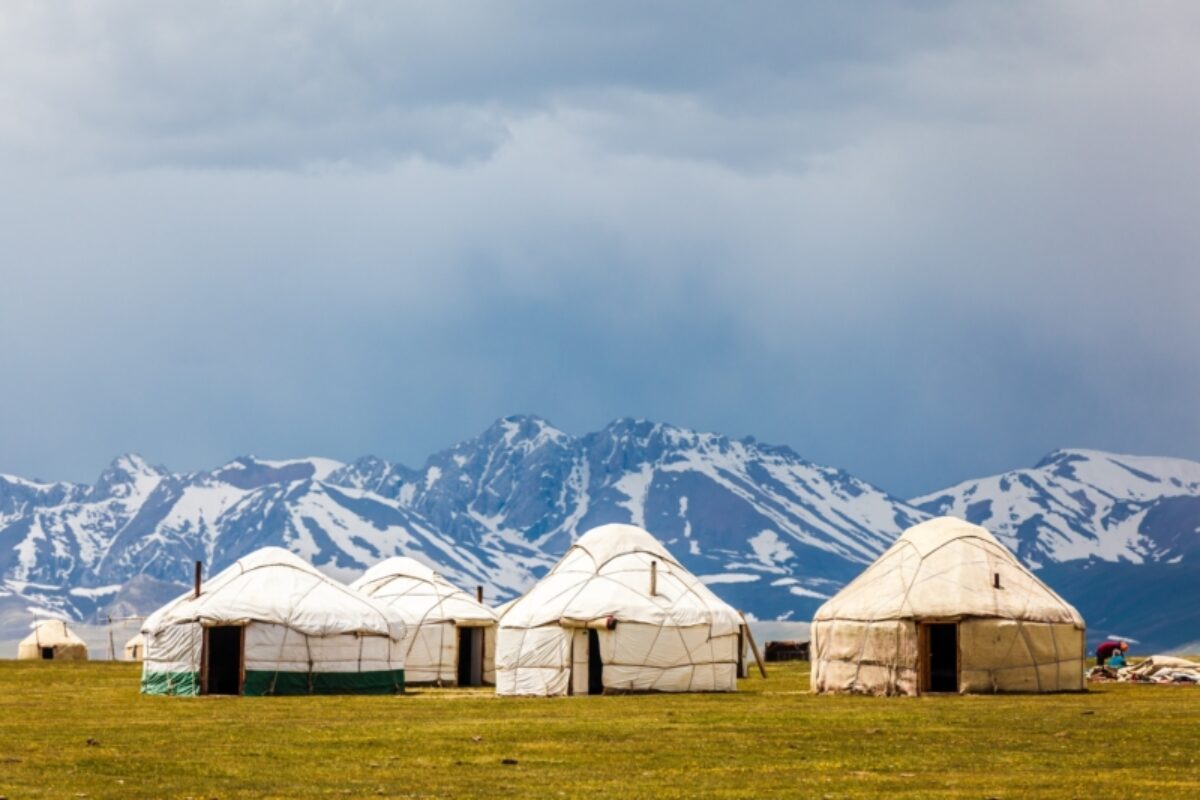
Yurts on the shores of Song Kul lake
The best treks in Kyrgyzstan
Some popular, and lesser-known, trekking routes
With a nearly endless list of possible trekking routes, it’s surprisingly tough to choose a "best of" list for Kyrgyzstan. If pushed I'd say the Ak Suu Traverse from Jyrgalan to Jeti-Oguz route via Ala-Kol might be my favourite. With lakes and waterfalls, one or two passes everyday for a week, and with the Altyn Arashan hot springs right in the middle, it has a bit of everything that makes trekking in Kyrgyzstan delightful.
But all the following treks and hikes boast magnificent landscapes and interactions with shepherds and maybe even a bit of wildlife: it’s hard to choose wrong, whichever you pick.
-
Altyn Arashan Valley
View trips -
Kyrgyzstan
View trips -
Kyrgyzstan
View trips -
Kyrgyzstan
View trips -
Kyrgyzstan
View trips -
Kyrgyzstan
View trips -
Kyrgyzstan
View trips -
Kyrgyzstan
View trips
Trekking in Kyrgyzstan: Need to know
Everything you wish you'd known before you booked
DIY vs organised treks
DIY trekking in Kyrgyzstan is possible, if not always easy to organise outside of the most common routes, although I’d strongly recommend you engage the assistance of a guide – for the cultural interactions as much as for safety.
Most people trek in Kyrgyzstan as part of an organised tour. International trekking operators organise fully-supported guided treks and walking holidays. This may be a single point-to-point trek, in which case the price will include guides, porters, food, accommodation and all ground transfers. Alternatively it may be a multi-centre type trip, with a few days’ hiking in several different locations.
Spread your wings
You’d be hard-pressed to call any part of Kyrgyzstan “touristy” but the trail to Ala-Köl (Ala Kul) is by far the most popular. I can see why: climbing the final scree-slope steps of the pass is a genre-defining moment. The 360-degree panorama of a long sloping glacier feeding into the turquoise lake backed by layers and layers of Tien Shan peaks is among my favourite trekking views ever, anywhere. But there’s so much more to explore in the country, and sadly, many visitors don’t bother to seek it out.
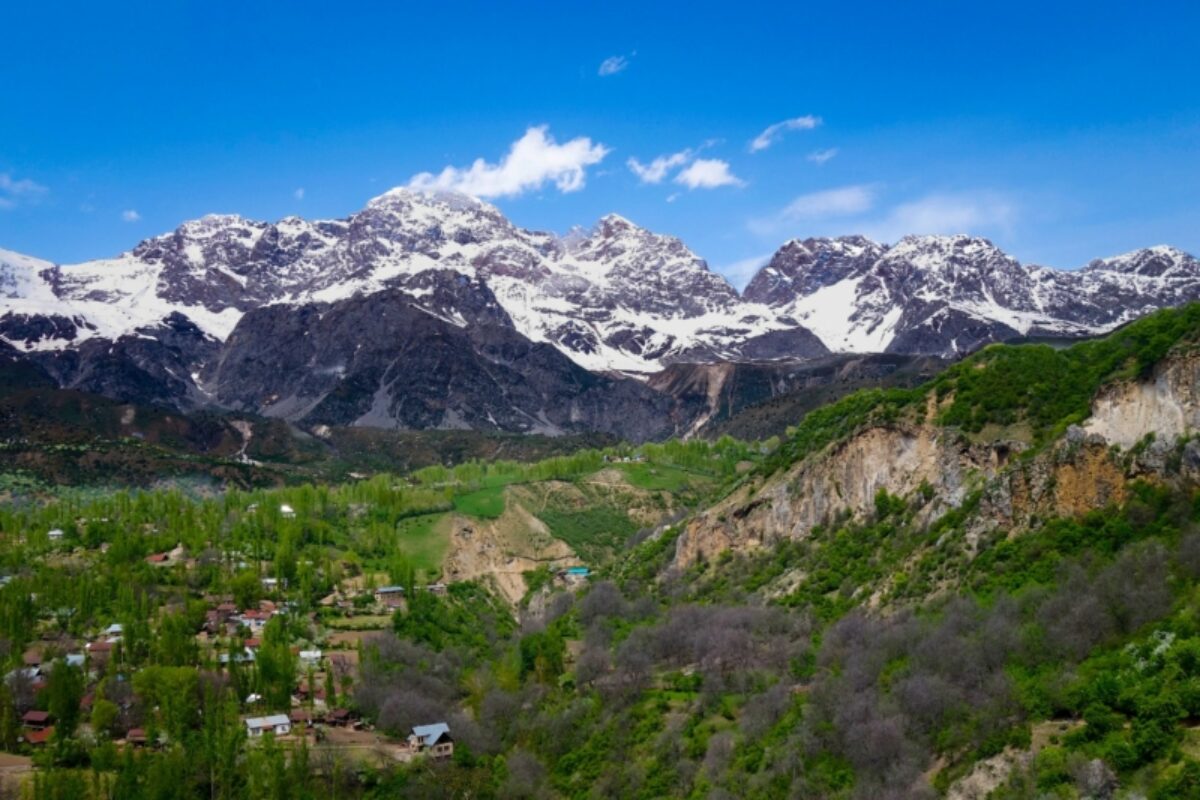
Stunning scenery around Arslanbob
Kyrgyzstan trekking FAQs
Your questions, our expert answers
Question
When is the best time to go trekking in Kyrgyzstan?
Answer
The high season is mid-June through mid-September, as higher temperatures mean less snow on high passes and in deep valleys, though it is important to be prepared for any weather all year round at these elevations.
Spring sees hillsides covered in wildflowers and autumn brings bright autumnal foliage, but in both hikers will need to be prepared for lower overnight temperatures and plenty of rain.
Winter does see some snowshoe and cross-country skiers, or in the rare desert areas that see no real precipitation, sometimes a tiny few dedicated hikers.
Question
How challenging is trekking in Kyrgyzstan? Would you recommend it for, say, a fit & active 60 year old?
Answer
Most of the trekking in Kyrgyzstan is non-technical and requires no real skill. But there’s plenty of elevation gain most days and very little flat walking, so the focus should really be on assessing the ‘fit and active’ criteria in the lead up to a trip.
Question
What kind of food should I expect on a trek in Kyrgyzstan?
Answer
Shepherds’ yurt camps will typically offer passing visitors tea or fermented horse milk and some small bites but, if trekking solo, you’ll want to carry in your own provisions as much as possible. The major exception is tourist yurt camps, which typically include breakfast and dinner into their pricing schemes.
On an organised trekking tour you'll be well catered for, with three meals a day.
Question
What sort of accommodations are there? Can we stay with locals in Yurts?
Answer
On DIY trek, there is only the accommodation that you carry in on your back. Yurts do exist in most places, but these are typically authentic shepherd’s yurts and not really set up to receive tourists. You may be welcomed in, but expect a very rustic experience, and at any rate you can’t count on it so you’ll still need to lug a tent along.
On organised trekking tours your operator will take care of the camping logistics: you'll have porters striking and setting up camp each day and horses or vehicles transporting camp equipment from stop to stop.
In more popular tourist areas like Ala-Kol and Son-Kol, local community-based tourism programs have established tourist yurts that do reliably receive overnight guests.
Question
Which is your favourite region to trek in Kyrgyzstan?
Answer
I’m a big fan of the village of Jyrgalan in far eastern Issyk-Kul. It’s one of the few areas where you can walk right out the door and into the start of a hike, and also quite popular for freeride skiers in winter.
To pick one best trek, the Ak Suu Transverse from Jyrgalan to Jeti-Oguz route via Ala-Kol might be it - lakes and waterfalls and one or two passes everyday for a week, in varying scenery and with the Altyn Arashan hot springs right in the middle. It has a bit of everything that makes trekking in Kyrgyzstan delightful.
Question
Is trekking in Kyrgyzstan safe? How about for solo female travellers?
Answer
Kyrgyzstan is safe with the caveats of any wild alpine destination: landslides, flash floods, widowmakers (falling tree branches), and avalanches can and do happen in a mountain environment and you should be prepared for these eventualities.
Solo female travellers need have no specific concerns for Kyrgyzstan, beyond the risks that exist anywhere in the world.
Question
Are any special permits required to trek in Kyrgyzstan?
Answer
No permits are required for trekking, but border areas do require a special permit from the Border Guards Service. The most popular tourist and trekking areas that this includes are Peak Lenin Base Camp, Kel-Suu Lake, and Inylchek Glacier and Base Camp areas. While this is possible to do individually, it will require multiple visits over several weeks to various government offices in Bishkek and regional cities. It’s far more practical to pay a tour company $40-50 to do it on your behalf before you arrive in the country.
Question
Can you trek in Kyrgyzstan solo or without a guide?
Answer
Most of Kyrgyzstan’s trekking routes can be done solo, but having a guide or even just a local friend along can open up so many yurt doors and so many incredible interactions along the way: from simply being invited in for tea and a chat to being invited along on horseback to collect the herds from high pastures in the morning.
Despite how amazingly vast the landscapes are, so many of my favourite trekking moments have been borne of these small personal interactions that even the best route planning and map reading could never guarantee.
The major exception might be routes along the southern border with Tajikistan, where recent border clashes mean having a guide and interpreter to hand is probably wise.
Question
What are the hardest and easiest treks in Kyrgyzstan?
Answer
A few day trips out of Bishkek are suitable for basically any fitness and experience level: Ala-Archa’s waterfall, Belagorka waterfall, and Boirok Birch Grove are all top of mind. In terms of most difficult, the sky's the limit. Peak Lenin is one of the most accessible 7,000m+ peaks on the planet, but with a guide and some climbing training can be done by trekkers.
Question
Where can you do horse trekking in Kyrgyzstan?
Answer
Basically anywhere that one treks can be done as a horse trek, with a rare few exceptions like Ala-Kol where the primary trail is in parts either too steep or poor footing for horses. Most visitors will arrange these trips in tourist hubs like Karakol, Kochkor, Naryn, or Sary-Mogol; but in principle anyone with the language and horsemanship skills could arrange this directly with shepherds in the mountains.
Question
What trekking/camping gear can I rent in Kyrgyzstan?
Answer
The full range of necessary gear is available in trekking hubs (especially Bishkek and Karakol), though footwear for anything larger than about 40cm can be difficult to find. However, the gear available is often low-end Russian equipment (some military, more often Red Fox or similar brands) so Ultralight wannabees will need to bring everything from home.
Question
What languages are most useful while trekking in Kyrgyzstan?
Answer
In cities, Russian and Kyrgyz are more or less equally common, with English and other foreign languages also heard in the more touristy destinations. In rural regions and especially deep in the mountains, Kyrgyz is by far the more common with Russian a bit behind. Though, oddly, as part of the Soviet educational system German was widely taught and so some old timers can still converse a bit.

